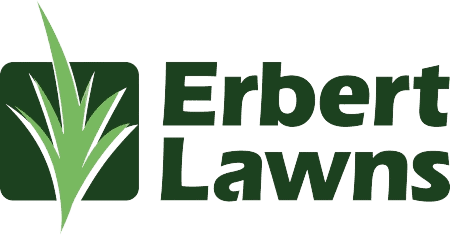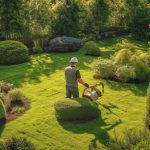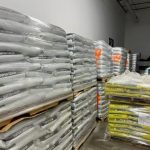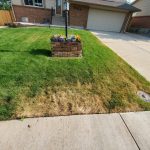Lawn care techniques that work well are subjective to the location in which they are used. The success from state to state with different techniques has a wide variation There are specific methods for growing a lawn in Colorado. Throughout the season there can be common lawn diseases, you need to keep any eye out for.
As close as your nearest Green Belt, you can experience Mother Nature in her glory. The scenic route of the Green Belt is an ecosystem of many creatures, plants, fungi, and more. Everything exists together in harmony right before your eyes. The native plants that grow in the Mile High City are acclimated to the Colorado climate. Generally these plants are hardy and withstand the random snow dumps we get in late spring or early fall.
The lawn in front of your home is quite different from the Green Belt. The ideal lawn does not contain various plants altogether living in harmony. Lawn lovers want soft, lush, green grass that is gentle on the toes when walked on.
Learning to grow a lawn to success is much like taking on a new pet. A new pet owner who has done little to no research on the species and breed of the animal they now own, is likely to struggle with pet parenthood. They need to know what to feed them, how much activity they require, how to potty train if necessary, proper cage set up if they have one, common illnesses to watch out for, and so much more. With grass, you can’t just throw some seeds on the ground and expect seeds to grow. You need to be able to identify the lawn diseases or issues.
If you want to grow a successful lawn in Colorado you’ll need to familiarize yourself with the best grass varieties for our climate: cool season grasses. Kentucky bluegrass, Perennial ryegrass, and tall Fescue are some of the favorable species for Colorado lawns. A cool season grass grows rapidly in the spring and fall when the temperature is cool. In the summer it will slow growth and sometimes even go dormant during periods of heat stress and drought. In the winter it stays dormant awaiting spring’s return. A warm season grass such as Bermudagrass is considered a weed in Colorado but is the staple species in Florida lawns.
After figuring out the type of seed that will thrive in Colorado’s climate, lawn lovers must learn about the physical needs of the plant itself. In order to get a thick and dense lawn, the health of the roots below the soil line must be maintained. A healthy root system is important because this is how all plants absorb nutrients and water. The top of the plant has an entirely different job. The process called photosynthesis is how plants turn carbon dioxide into sugar. During daylight hours grass, as well all plants with chlorophyll (green pigment), will suck up water from the roots, intake carbon dioxide through the stoma of the leaves, create sugar (food for itself), and expel oxygen. Plants that grow outside do not need help from their caretakers to photosynthesize, they do it on their own. But the bottom half, the roots, need adequate water and to be fed regularly with a balanced fertilizer.
The roots also require airflow. Soil can become compacted. When this happens it is not able to retain or drain water properly. Nutrients can be stuck on top and never reach down to the roots. An easy fix is an aeration. This will loosen up the soil allowing the roots to grow deeply. This in turn prevents them from sun damage. We offer a liquid aeration service at Erbert Lawns. Humic minerals and sea kelp are included in our product. These feed the microorganisms that help the roots of the lawn stay healthy.
It is also important to mow regularly. 3 inches is our recommended height. Any lower and you risk exposing the roots to be dried out by the hot sun. 6 inches and beyond will cause your grass blades to be difficult to mow. Since grass grows so rapidly at times, keeping it at the 3 inch mark gives you a wide enough margin that if you miss a week of mowing you won’t be overwhelmed the next time.
You should also familiarize yourself with the common lawn diseases for the area. Leaf blight is extremely common in Colorado, especially during the peak of summer. Leaf blight is a fungus that develops within a lawn under humid conditions. The high temperatures can be too much at times for cool season grasses. Lawn caregivers often make the mistake of trying to counter the drought stress with extra watering. This can be extremely counterproductive. The high heat will keep the ground relatively warm at night, mix that with the heavy watering and you get humid conditions that leaf blight loves. The grass blades will appear “sunburned.” If this happens to you, don’t panic and water more. Adjust your watering schedule to early morning watering. The sun will come up shortly after and any excess water on the surface will be evaporated leaving the leaf blight fungus no longer in ideal conditions.
There are various pests, weeds, and other lawn diseases to look out for. There is an endless amount of information to learn. The average homeowner is far too busy to take on researching how to grow grass properly and how to problem solve when things go wrong. Hiring a lawn care company, such as Erbert Lawns, takes the hard work off your hands. We are a group of dedicated lawn experts who’ve spent the last 35 years learning all things lawn care. Give us a call or text today for all your lawn care needs.










